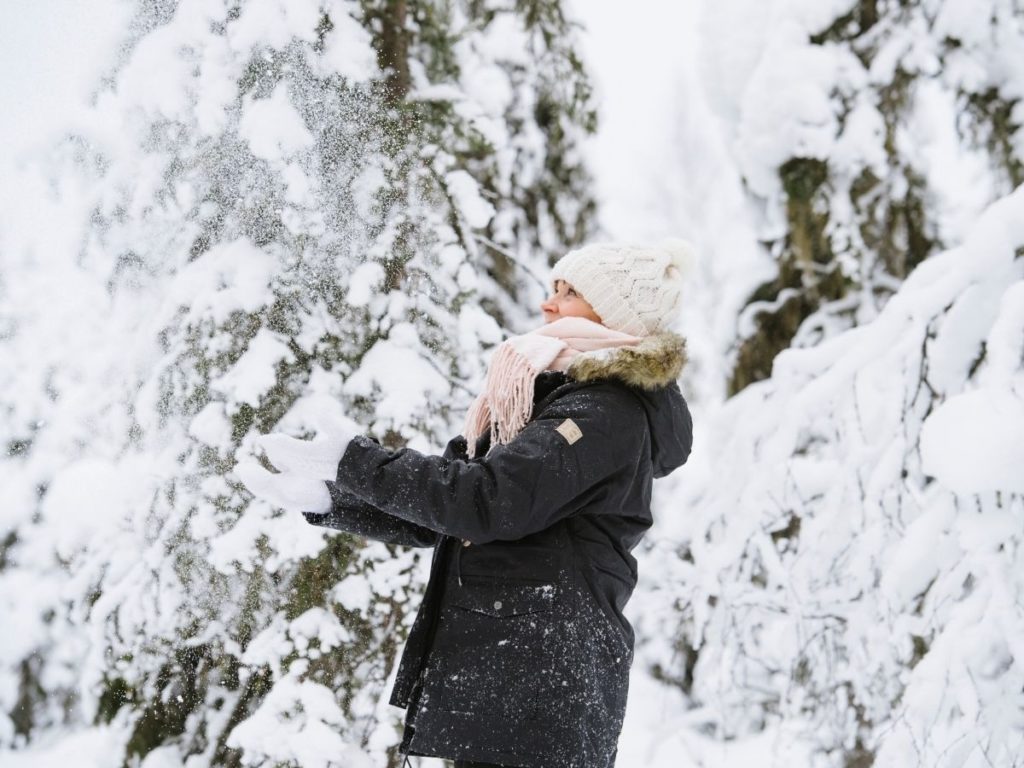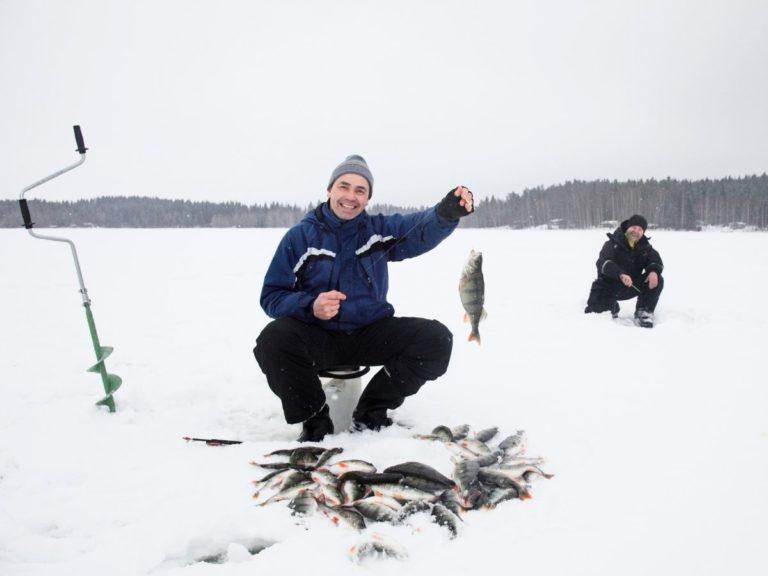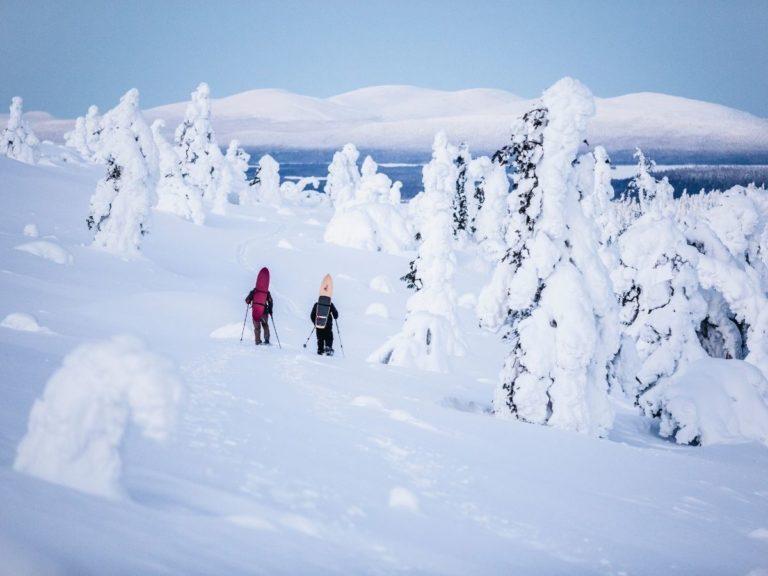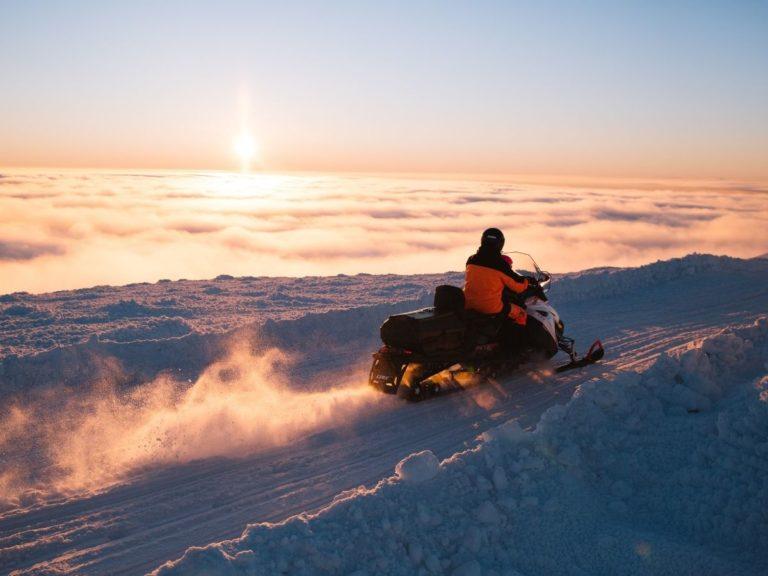The base layer transfers moisture from the skin
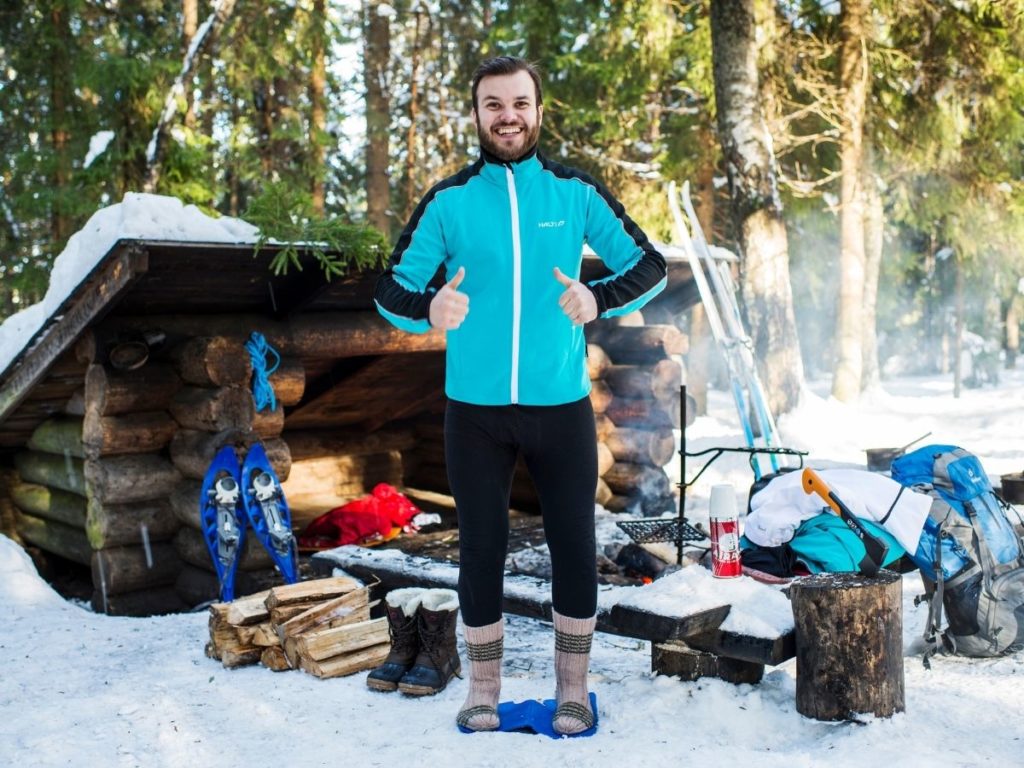
Layering, of course, starts with the base layer, whose main function is to effectively transfer moisture towards the upper layers and thereby keep the skin dry as well as warm.
Most backing layers are made of either pure polyester or a blend containing it. Polyester is a synthetic fiber that does not absorb moisture, which means that it also dries much faster than cotton, for example. The weakness of polyester, in turn, is that it absorbs more odors than natural fibers, which can be difficult to remove even in laundry.
Alongside polyester, due to its weaknesses, a few different silk and wool materials have emerged in recent years, the most popular of which has definitely been merino wool. The greatest strength of such natural fibers is that their thermal insulation capacity is in a class of its own compared to other materials. In addition, garments made of merino wool are more comfortable against the skin, which makes them feel much more comfortable when worn with polyester, for example. In addition, merino wool effectively transfers moisture away from the skin and does not absorb odor like polyester.
A high-quality underlay is the real cornerstone of layering, which is good to use whenever you go out. Although underlays are also available with short sleeves and legs, in winter it is better to prefer long options that protect, for example, ankles, wrists and lower backs, which are prone to freezing as “seams” of clothing. Special attention should be paid to children in winter clothing, for whom a high-quality underlay is also necessary during shorter outdoor stops.
The middle layer generates feeling of warmth
The middle layer is worn on top of the base layer, the main purpose of which is to give the wearer the much-needed feeling of warmth, which is, of course, important for making your stay outdoors as comfortable as possible.
Porous materials such as wool or fleece are often used in the middle layer. In recent years, many clothing manufacturers have also introduced lighter fiber-filled jackets, which are also well-suited for use in middle layer clothing.
If the situation so requires, more than just one layer can be worn. Here, however, it is good to remember that using too many layers and thereby reducing the space is not optimal for heat retention, but air is also needed between the layers and the materials, which plays an important role in creating a feeling of warmth.
Moisture transfer as well as thermal insulation also play an important role in the middle layer of clothing, which means that cotton is still not the optimal choice here. Although cotton feels pleasant as a material, it absorbs moisture and does not insulate heat particularly well.
If you want to use natural material in the middle layer, you should definitely look to the side of woolen clothes. As a material, wool has both moisture-evaporating and repellent properties, which are also needed in the interlayer. Wool garments also do not easily cause odor nuisances, but unpleasant odors can be eliminated even by mere ventilation. Of the individual materials, merino wool already mentioned in connection with the initial layer is also the best possible choice in the intermediate layers.
Of the various synthetic fibers, fleece is a good choice. Fleeces have a soft material, are very warm and moisture-wicking, and are often considerably cheaper than merino wool. When ending up with man-made fiber, it is good to take into account e.g. the flammability of the material, as well as factors related to cleaning and odor nuisance, which, like polyester, also apply to fleece.
The shell layer protects against weather phenomena

As the name implies, the main function of the shell layer, which becomes the outermost layer, is to protect its wearer from the varying weather phenomena of nature. A high-quality shell layer protects its user e.g. UV rays from snow, water, wind and the sun. In addition to its protection, the function of the shell layer is to evaporate the moisture from the lower layers into the air and to help with thermal insulation. So a lot is required of the shell layer in terms of properties.
Quilted and down jackets are usually used in the shell layers. With the growing popularity of layering, the thicknesses of the shell layer have thinned and the materials used have become lighter.
Especially in milder weather, the base layer and the intermediate layer largely perform the thermal insulation work, in which case the main function of the shell layer is to protect its wearer from wind and rain. Because shell-layer clothing is required to have such a wide range of properties, separate ventilation breaks have also been added to many garments, which are usually opened with separate zippers. The purpose of the vents is to ventilate certain areas, such as the armpits, without the need to open the jacket.
For the shell layer, it is important to choose a suitable garment according to the prevailing weather conditions. In severe frost, you can wear even a thick down jacket, while in mild weather you should invest in the breathability of the garment.
In addition to the materials, it is good to pay attention to the fit of the garment. The well-fitting garment adapts to the wearer’s movements and is comfortable to wear, however, so that it does not let in cold air.
In the case of the shell layer, it is also necessary to take into account the type of outdoor activity at any given time. Lighter winter sports, such as a walk, require less breathability from clothing than active sports, such as cross-country skiing. When going on a sweat run, a light, very breathable, but on the other hand also protective layer against the wind is the most sensible choice. However, if after the run you still want to spend time outdoors, it is wise to put on a quilted or down jacket that is very heat-insulating and heavier.
Possible additional layers for cold weather
In the Finnish winter, temperature fluctuations can be large and other weather-related conditions can also vary from side to side in practice. Especially in cold and severe winter weather, it may be necessary to resort to additional layers that allow you to enjoy the outdoors in virtually any weather.
The additional layers, like the other layers, are selected according to the weather conditions, and in almost all weather conditions there is not even a need for that layer.
Various winter jackets such as quilted or down jackets as well as longer parka jackets are good choices for the thermal layer. These garments allow you to go outside comfortably in virtually any weather. A longer parka jacket in particular is a good choice, as it also protects the thighs, in addition to which they very often have a large hood, which is good for protecting the head, neck and neck area.
Winter shoes and boots

Also, when it comes to dressing for the winter, don’t forget footwear, which are actually among the most important of the individual areas.
Above all, a good winter shoe must be kept on all surfaces, which can include everything from mirror ice to watery slag during the winter. In addition to a firm and high-quality sole, the strength of the shoe helps to achieve a better balance and also increases comfort.
In addition, winter shoes must be very tolerant of moisture and, on the other hand, allow the foot to breathe. The better the foot sits on the shoes in use, gaining stability and comfort, the more comfortable they are to wear during the winter outdoors as well.
When it comes to winter activities, there are practically all types of shoes of their own, from ski boots and skates to winter running shoes designed especially for winter conditions. The shoes that are suitable for different sports are quite easy to choose, so this section focuses more on the actual winter shoes.
When engaging in outdoor activities, it is good to remember that it is a good idea to choose footwear that is just right for outdoor use. In urban and village environments, relatively low ankle boots work well, while when going in the middle of the snow, it is good to prefer ankle and lower leg boots with enough insulating and weather-protective elements. As an individual feature, Gore-Tex is a good choice, as footwear using this technology is specifically designed for challenging winter conditions.
When choosing shoes, it is also good to remember that a shoe that fits too tightly on the foot does not leave room for the air needed to create a feeling of warmth. On the other hand, footwear that fits too loosely is not sturdy in the foot and can cause blisters, for example, with the resulting movement.
The headgear protects against heat escape

In addition to the feet, much of the heat evaporates through the head, which in practice means that the headgear plays an important role in winter wear.
Wool is an excellent material for headgear due to its many good properties. The other main material in headgear is synthetic polyester, which has moisture-wicking properties and good thermal insulation that works well for headgear as well.
Gloves and socks
Gloves also play an important role in keeping you warm. In the wetter frosts, gloves made of different materials are used in winter, but as the frosts intensify, I highly recommend choosing gloves in which the hands and especially the frost-sensitive fingers form a larger and better frost-protected whole.
I have very painful memories of wearing gloves in severe frosts, because one winter I chilled my hands while skating on the outside ice so badly that the feeling in my fingers only fully recovered many months after the event itself. In addition, my fingers have been much more prone to frostbite since this damage, and nowadays I can no longer wear gloves at all when the temperature drops to the frost side.
The purpose of socks is to keep your feet both dry and warm. I myself like to prefer a combination during the winter where the lower sock is a thinner synthetic sock that is designed to effectively transfer moisture away from the feet. On top of the man-made socks, I put some of the many wool socks woven by my mother. I like to wear wool socks when the weather cools down a lot indoors as well, as they are comfortable to wear in practice in any weather.
Layering in a nutshell
In layering, each layer has its own function and it is important to think carefully about the materials and types of clothing used for each layer. What works on another floor may not work at all elsewhere.
The optimal combination can always be found by trying things out in practice and above all in different circumstances.
It is worth investing in the base layer, as the lowest layer also plays the most important role in layering – the base layer should by no means be left out, even if the temperature is mild. It is preferable to prune garments away from the upper layers.
When considering layering, it’s a good idea to think about what kind of purpose you’re dressing for. Different materials are suitable for sweaty winter sports, such as cross-country skiing or ice skating, such as for a quiet walk or snowshoeing.
The function of layered clothing is to insulate heat, and in order to maintain this property, it is important that the layers do not tighten or squeeze.
Most heat escapes through our heads and feet. It is therefore worth investing in decent footwear and headgear in particular. The most easily freezing places are, for example, fingers and toes, which makes it wiser to wear gloves, especially in cold weather, which make the hand a larger uniform area that does not cool as easily as fingers in separate gloves.
The main image of the article: Juho Kuva | Visit Finland

